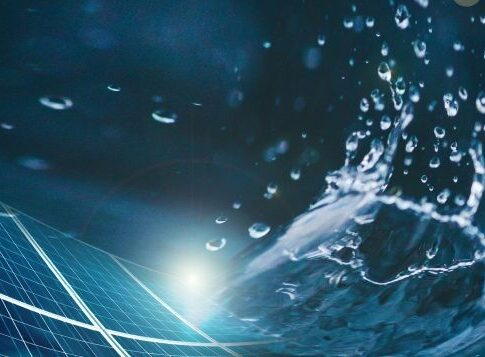In an era where water scarcity affects billions, a remarkable innovation from Ohio State University could redefine global water purification methods. Supported by the National Science Foundation, researchers have developed 3D nanotech blankets that leverage sunlight and advanced materials to purify water while generating energy—a feat that promises to significantly alter the landscape of water treatment.
With nearly half of the world’s population facing severe water scarcity annually, as highlighted in the 2024 UN World Water Development Report, the demand for efficient water purification solutions has never been more urgent. The traditional methods, burdened by issues such as high energy consumption and undesirable byproducts, struggle to meet the needs of a rapidly urbanizing world.
The team at Ohio State University, led by Professor Pelagia-Iren Gouma, has pioneered the creation of ultra-lightweight nanomats made of titanium dioxide (TiO₂) nanofibers. These blankets, described in the journal *Advanced Science*, utilize sunlight to break down pollutants without creating toxic byproducts, unlike conventional chlorination or UV treatment.
Incorporating copper to enhance their photocatalytic efficiency, these nanomats can absorb a broader spectrum of light, making them highly effective in pollutant degradation. Gouma remarks, “These nanomats can be used as a power generator, or as water remediation tools. In both ways, you have a catalyst with the highest efficiency reported to date.”
These innovative blankets are set to transform not only water treatment but also power generation, offering sustainable solutions for both sectors. Their potential applications in industrial wastewater treatment, disaster relief, and emerging energy fields like solar-driven hydrogen production make them a versatile tool for the future.
While the prototype’s promise is clear, scaling up production for commercial availability remains a challenge. Industry leaders like GE Water & Process Technologies and Aqua Membranes are exploring similar avenues, indicating a burgeoning interest in nanotechnology-based solutions.
Professor Gouma envisions a future where these blankets play a pivotal role in securing clean water access and sustainable energy production. “We have the tools to make them in large quantities and translate them to various industries,” she notes. “The only limitation is that it needs someone to take advantage of these abundant resources.”
Dr. Lara Mitchell, a water resources expert, believes this innovation could significantly bolster efforts in regions grappling with water scarcity. “The dual function of these nanomats—not only purifying water but also generating power—could provide a substantial boost to regions with limited resources.”


